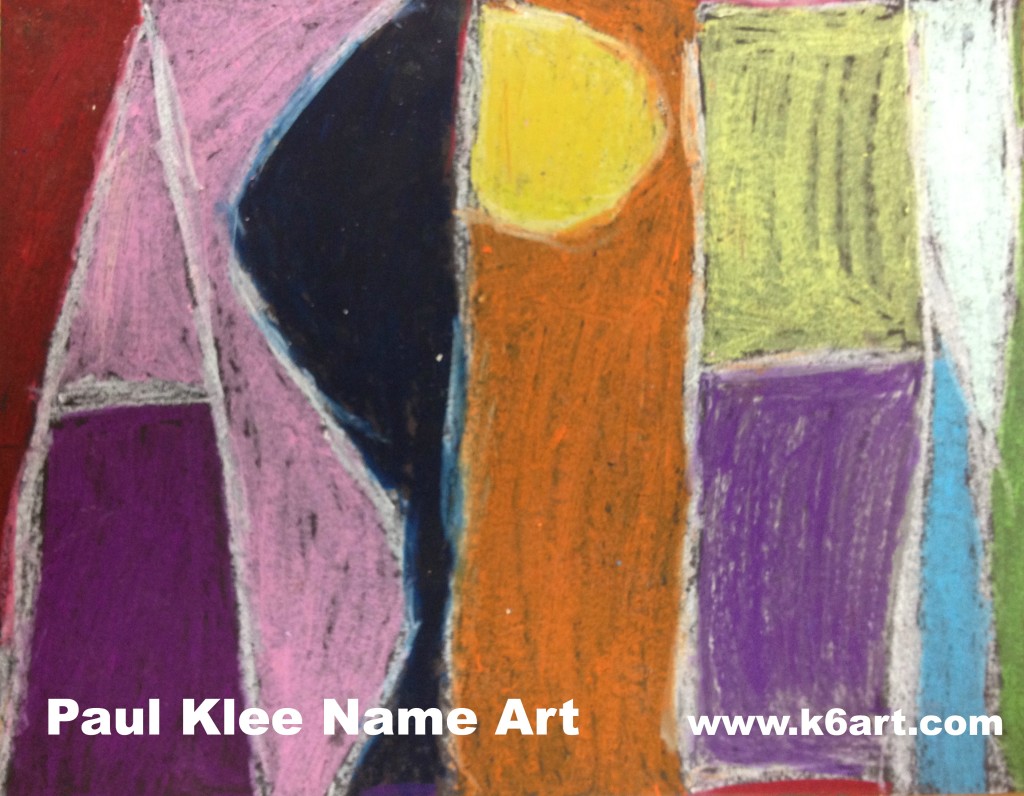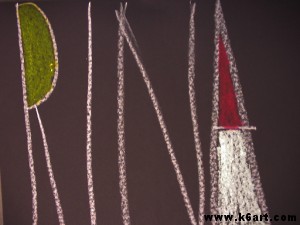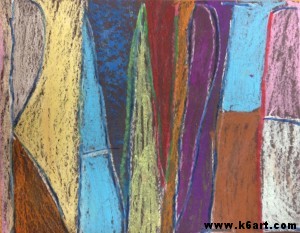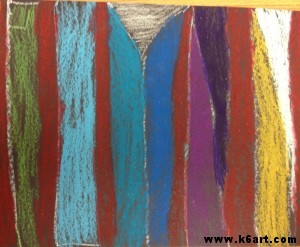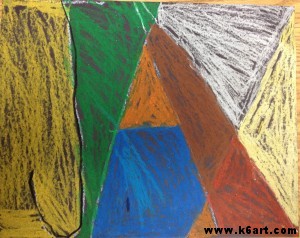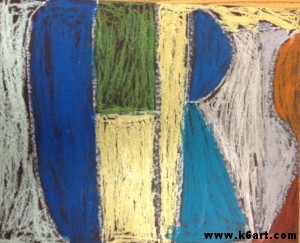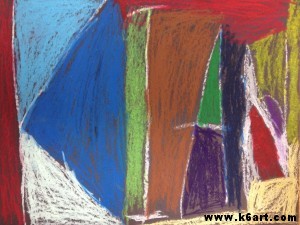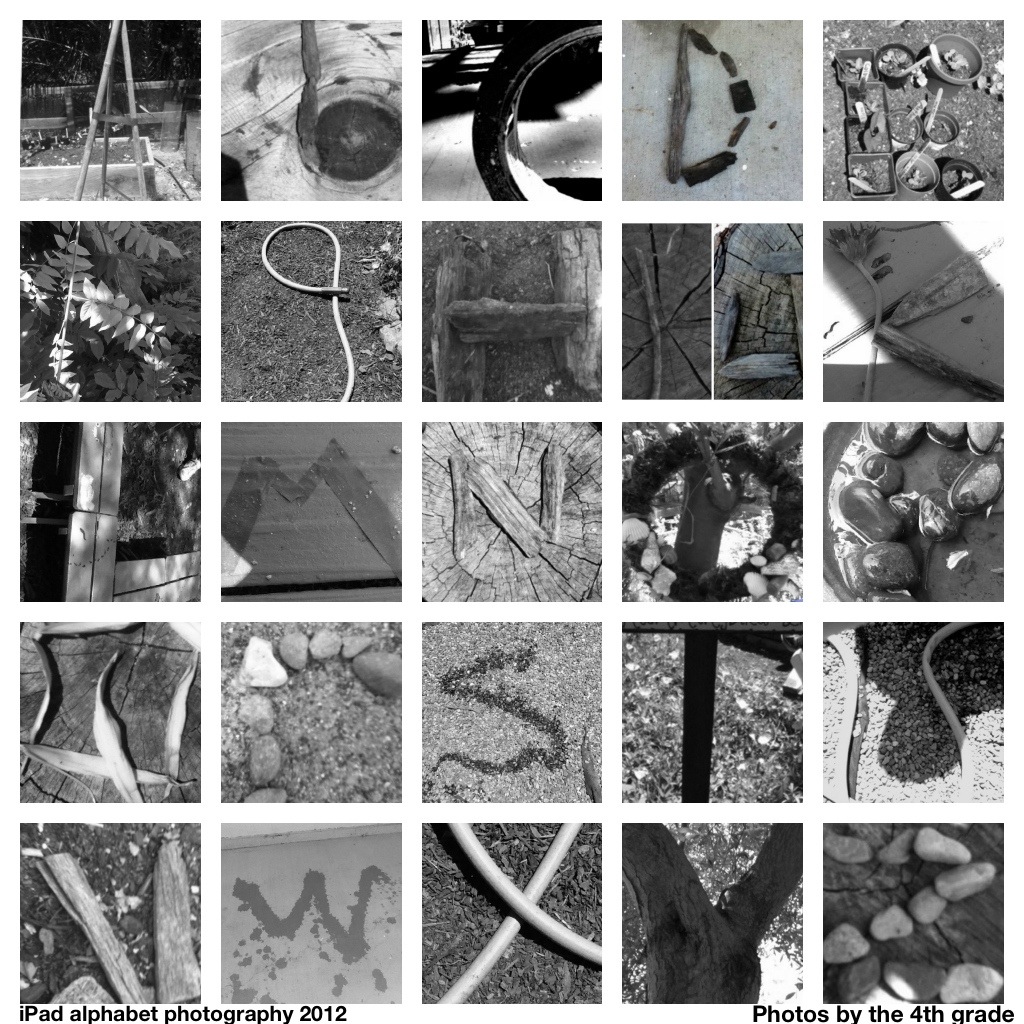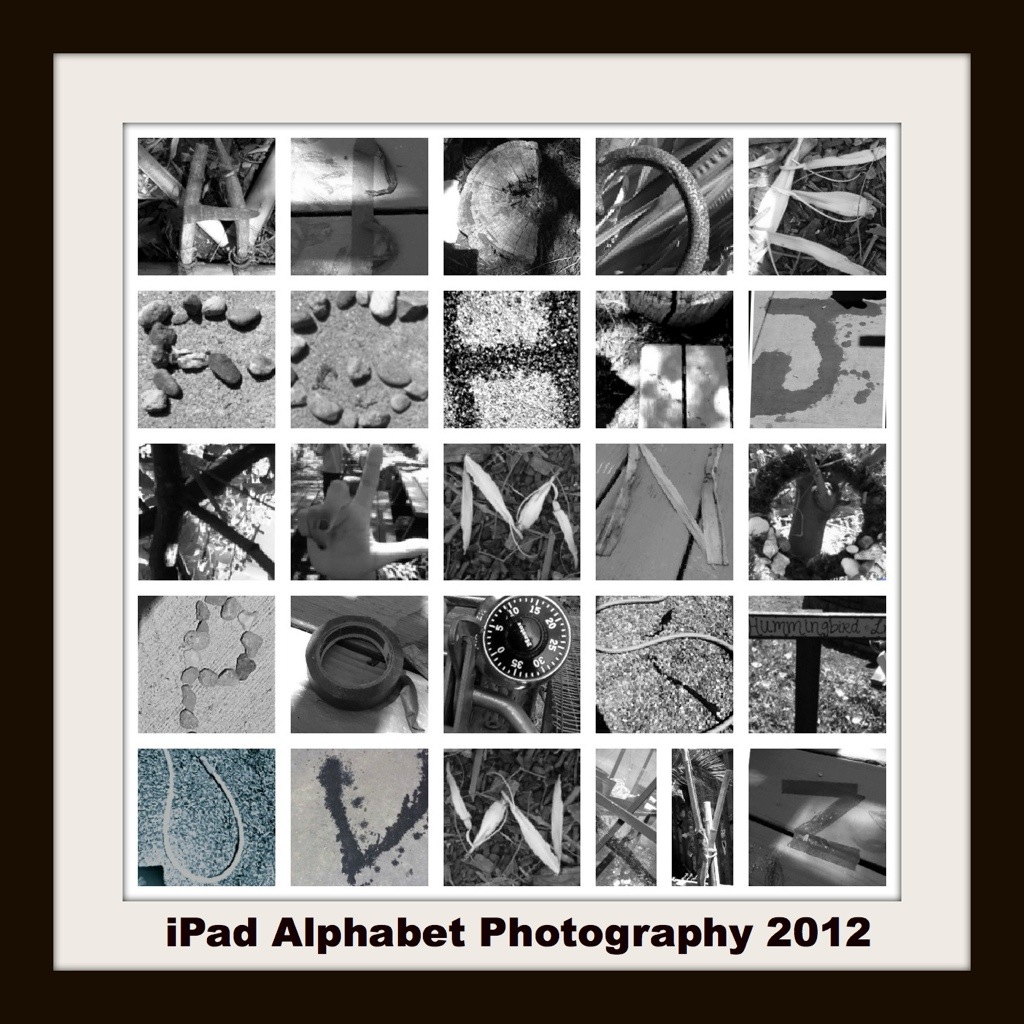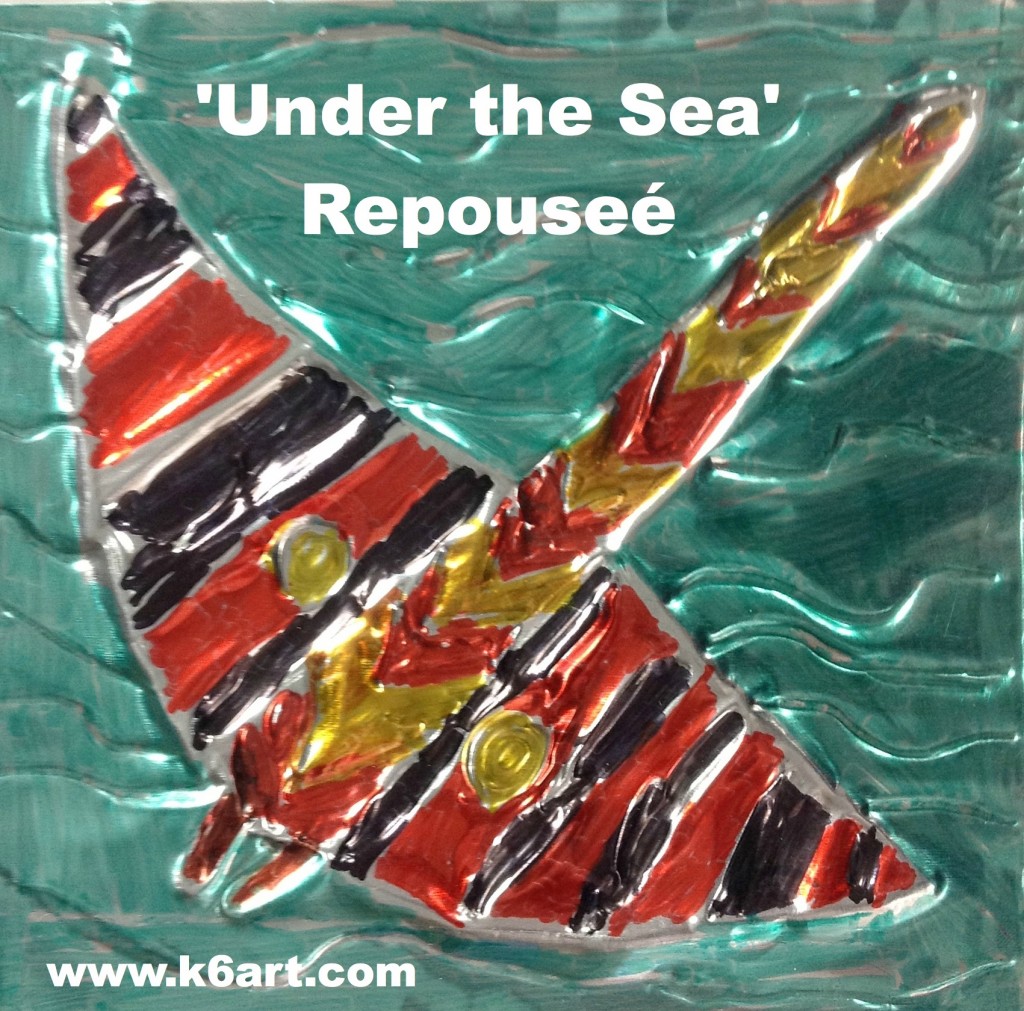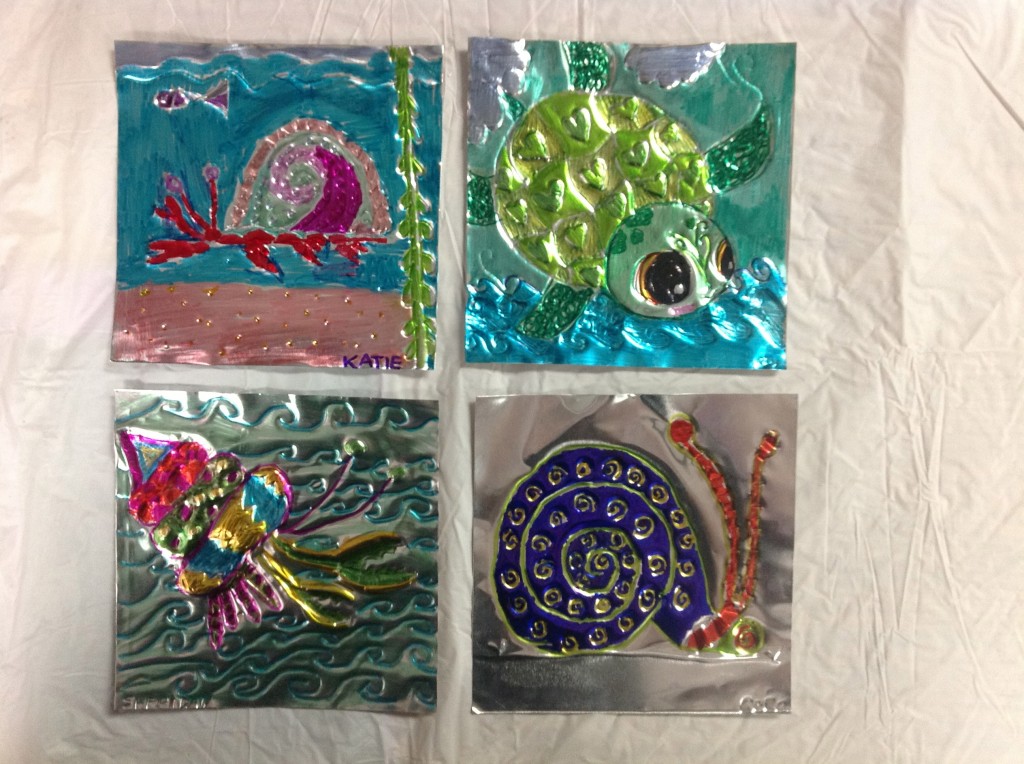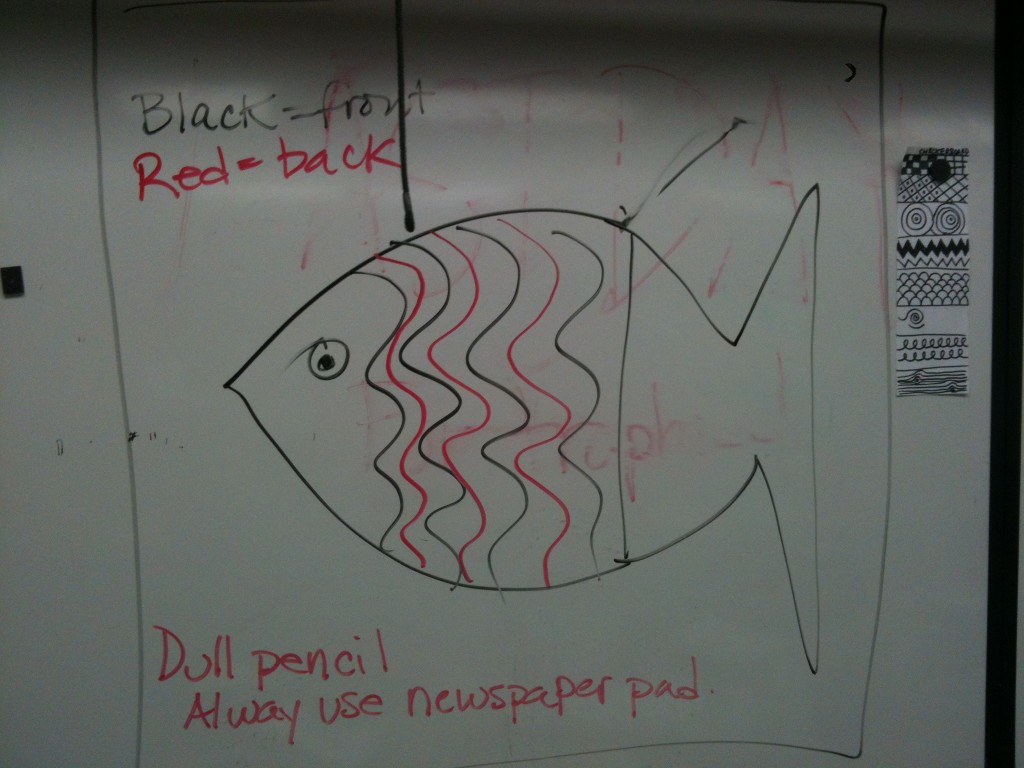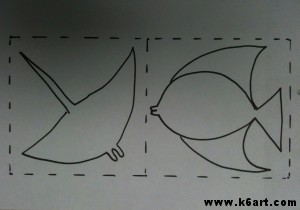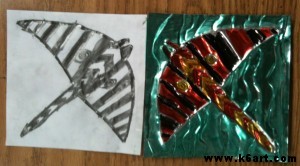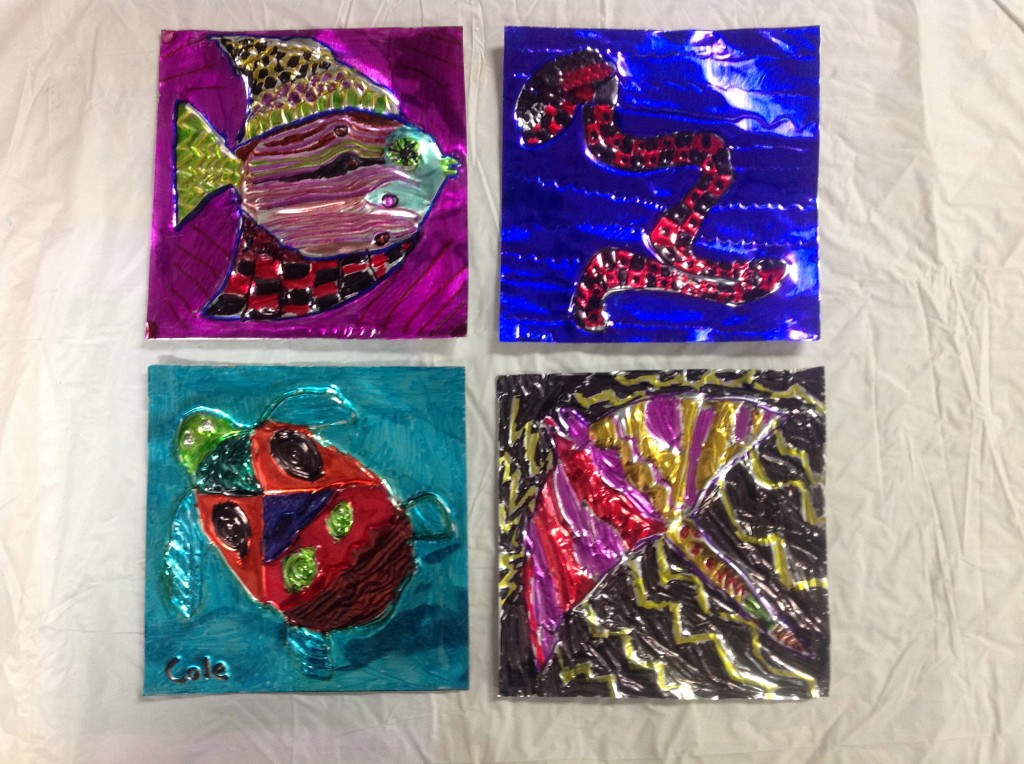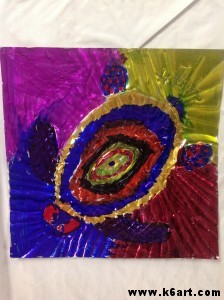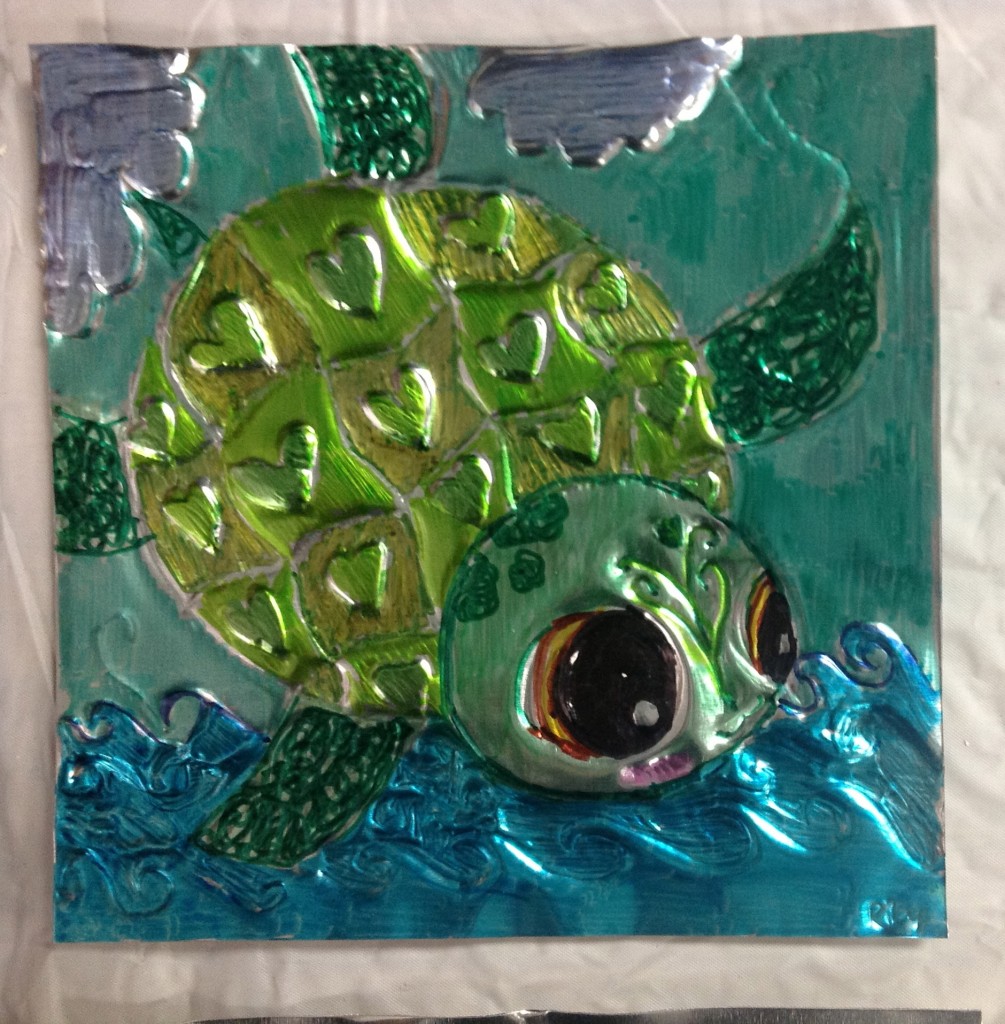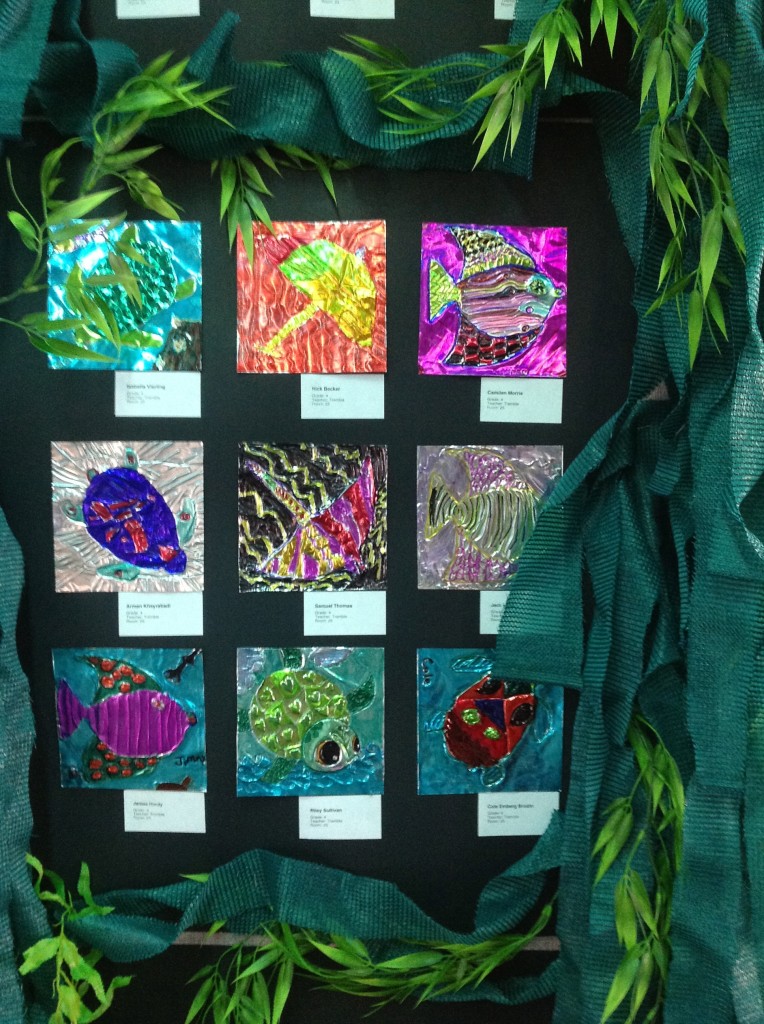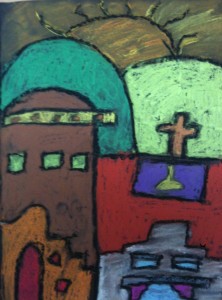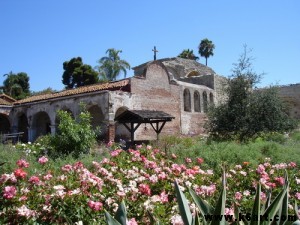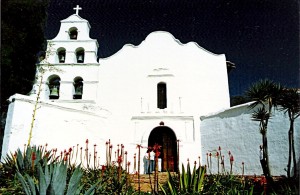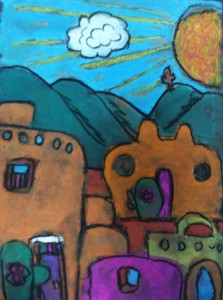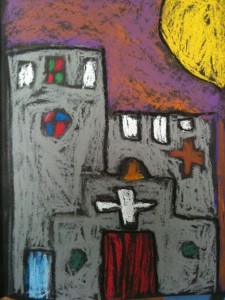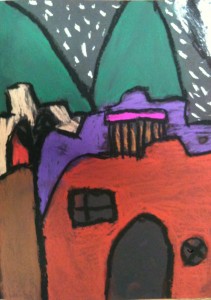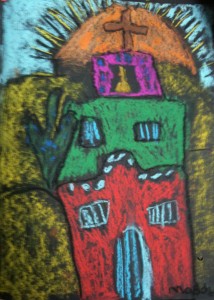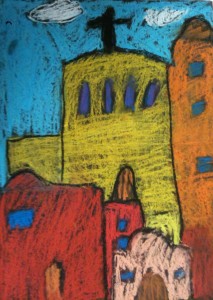Looking for an exciting name art project? How about introducing a famous artist at the same time? Try this Paul Klee-inspired graphic name art project.
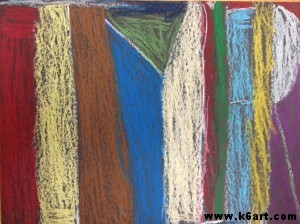
Second graders create name art in the style of Paul Klee. Allow 1-2 40 minute classes. Artwork by Tyler.
Start out by introducing artworks by Paul Klee. This project is inspired by his graphic works such as Castle and Sun. WikiPaintings has lots of images of his art. Click here, here, here, and here to see some of Klee’s other graphic artworks. This is a good time to talk about abstract art.
Materials:
- Black construction paper, 11″x14″
- pencils and erasers
- Oil Pastels (including white)
Students should turn their paper horizontally. They write their names in pencil, using all capital letters. Encourage students to S-T-R-E-T-C-H their letters from the bottom to the top of the paper (note: students with long names may need to draw extra skinny letters, use longer paper, or perhaps use their nicknames). The letters can touch the left and right sides of the paper AND touch each other: letters such as ‘E’, ‘F’ and ‘K’ look more abstract when drawn in this manner.
After they are pleased with the layout, they trace over their pencil lines in white oil pastel.
Next they color in the spaces in their name. Encourage them to use a variety of colors, although it is fine to repeat colors. Students must not color in with black pastels.
Completed second grade art:
Show students the completed projects and ask if they can read the artist’s name. Successful artworks are often abstracted to the point it is challenging to see the artist’s name! How does this compare to Klee’s graphic artworks?
This lesson plan was inspired by (or abstracted from!) this fabulous post on the Kids Artists blog.
Enjoy!
Do you have a favorite name art lesson plan for the beginning of the year?

